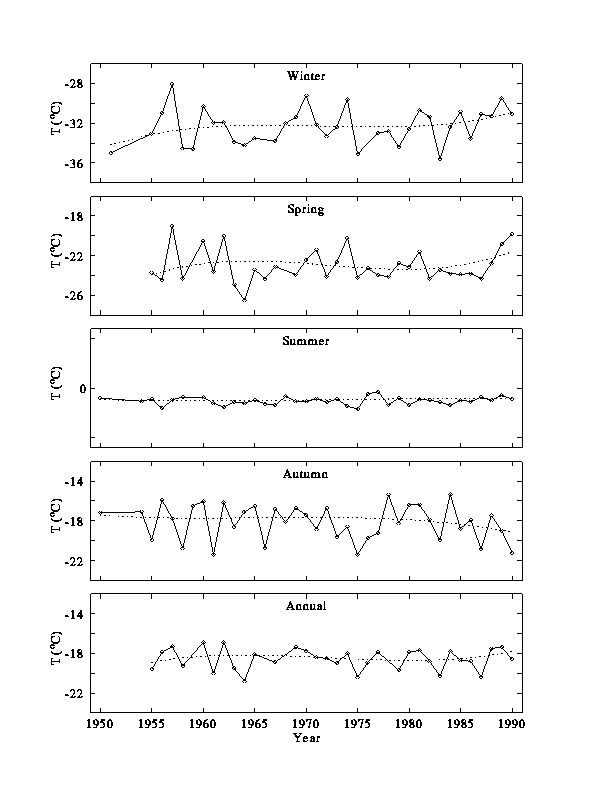

Starting in 1937, the Soviet Union deployed drifting ice stations on multiyear ice floes, or ice islands, which collected a variety of meteorological data, including near-surface air temperature measurements. During the period 1954-1991, the Russian NP (for North Pole) ice stations were maintained continuously, with one to four stations simultaneously deployed throughout this period. The data from this program became available in the west after the demise of the Soviet Union. Because the 2-meter air temperatures from the NP stations represents the most reliable multi-decadal record of Arctic air temperatures available, we recently performed a careful seasonal trend analysis using this data set.
A description of this work and its results can be found in our paper Recent observations of a spring-summer surface warming over the Arctic Ocean (Martin, Munoz and Drucker, 1997.) In the paper, we analyzed temperatures for the 30-year period 1961-1990. Using a method of weighted least-squares regression, we found statistically significant warming trends in May and June, or seasonally, in summer.
Of particular interest, though, are the mean seasonal temperatures of the last decade of the analysis (1981-1990). There is a marked upward trend (see plot) in all seasons except autumn, particularly in the spring and winter. This change could reflect a shift in the extent of the ice-bound season. Unfortunately, the Russian NP program ended in 1991, so that the extent and significance of the observed changes are not yet known.
 View plots of Arctic Temperature Trends
View plots of Arctic Temperature Trends